Lending Standards Are Not Like They Were Leading Up to the Crash

You might be worried we’re heading for a housing crash, but there are many reasons why this housing market isn’t like the one we saw in 2008. One of which is how lending standards are different today. Here’s a look at the data to help prove it.
Every month, the Mortgage Bankers Association (MBA) releases the Mortgage Credit Availability Index (MCAI). According to their website:
“The MCAI provides the only standardized quantitative index that is solely focused on mortgage credit. The MCAI is . . . a summary measure which indicates the availability of mortgage credit at a point in time.”
Basically, the index determines how easy it is to get a mortgage. Take a look at the graph below of the MCAI since they started keeping track of this data in 2004. It shows how lending standards have changed over time. It works like this:
- When lending standards are less strict, it’s easier to get a mortgage, and the index (the green line in the graph) is higher.
- When lending standards are stricter, it’s harder to get a mortgage, and the line representing the index is lower.
In 2004, the index was around 400. But, by 2006, it had gone up to over 850. Today, the story is quite different. Since the crash, the index went down because lending standards got tighter, so today it’s harder to get a mortgage.
Loose Lending Standards Contributed to the Housing Bubble
One of the main factors that contributed to the housing bubble was that lending standards were a lot less strict back then. Realtor.com explains it like this:
“In the early 2000s, it wasn’t exactly hard to snag a home mortgage. . . . plenty of mortgages were doled out to people who lied about their incomes and employment, and couldn’t actually afford homeownership.”
The tall peak in the graph above indicates that leading up to the housing crisis, it was much easier to get credit, and the requirements for getting a loan were far from strict. Back then, credit was widely available, and the threshold for qualifying for a loan was low.
Lenders were approving loans without always going through a verification process to confirm if the borrower would likely be able to repay the loan. That means creditors were lending to more borrowers who had a higher risk of defaulting on their loans.
Today’s Loans Are Much Tougher To Get than Before
As mentioned, lending standards have changed a lot since then. Bankrate describes the difference:
“Today, lenders impose tough standards on borrowers – and those who are getting a mortgage overwhelmingly have excellent credit.”
If you look back at the graph, you’ll notice after the peak around the time of the housing crash, the line representing the index went down dramatically and has stayed low since. In fact, the line is far below where standards were even in 2004 – and it’s getting lower. Joel Kan, VP and Deputy Chief Economist at MBA, provides the most recent update from May:
“Mortgage credit availability decreased for the third consecutive month . . . With the decline in availability, the MCAI is now at its lowest level since January 2013.”
The decreasing index suggests standards are getting much tougher – which makes it clear we’re far away from the extreme lending practices that contributed to the crash.
Bottom Line
Leading up to the housing crash, lending standards were much more relaxed with little evaluation done to measure a borrower’s potential to repay their loan. Today, standards are tighter, and the risk is reduced for both lenders and borrowers. This goes to show, these are two very different housing markets, and this market isn’t like the last time.
Home Lending Standards Today: A Look at the Differences Since the 2008 Housing Crash
Introduction:
The 2008 housing market crash had a significant impact on the real estate industry and the economy as a whole. One of the key factors contributing to the crisis was loose lending standards that allowed borrowers to secure mortgages they couldn't afford. However, it's crucial to understand that the lending landscape has undergone significant changes since then. In this blog post, we will explore how home lending standards have evolved and why partnering with Grell Realty Group and the Grell Team, the leading realtor in San Antonio, TX, is the ideal choice for navigating today's lending environment. By incorporating SEO keywords, we aim to provide valuable insights to homeowners and prospective buyers, positioning this post for higher visibility on Google.
1. Stringent Mortgage Approval Process:
Following the 2008 crash, mortgage lenders have implemented much stricter approval processes. Borrowers are now subject to rigorous verification of income, assets, credit history, and employment stability. Lenders carefully analyze debt-to-income ratios to ensure borrowers can comfortably afford their mortgage payments. These stringent measures help mitigate the risk of borrowers obtaining loans beyond their means and promote a healthier lending environment.
Keywords: Home lending standards, mortgage approval process, borrower verification, debt-to-income ratio, risk mitigation.
2. Documentation and Proof of Ability to Repay:
Unlike the pre-2008 era, lenders today require comprehensive documentation and proof of the borrower's ability to repay the loan. This includes thorough income verification, tax returns, bank statements, and employment history. Lenders scrutinize these documents to ensure borrowers have the financial capacity to meet their mortgage obligations. This shift in focus to responsible lending practices safeguards both borrowers and the stability of the housing market.
Keywords: Documentation requirements, ability to repay, responsible lending practices, income verification, financial capacity.
3. Stricter Credit Score Requirements:
Credit scores play a critical role in the lending decision process. Post-2008, lenders have raised the bar for credit score requirements. Higher credit scores are now necessary to qualify for competitive interest rates and favorable loan terms. This shift incentivizes borrowers to maintain a strong credit profile, promoting responsible financial behavior.
Keywords: Credit score requirements, competitive interest rates, favorable loan terms, responsible financial behavior.
4. Increased Transparency and Consumer Protection:
Regulatory reforms implemented after the housing crash have enhanced transparency and consumer protection measures in the lending industry. Lenders are required to provide clear and comprehensive disclosure of loan terms, fees, and potential risks. This ensures that borrowers have a full understanding of their mortgage commitments, empowering them to make informed decisions.
Keywords: Regulatory reforms, transparency, consumer protection, loan disclosure, informed decisions.
5. Professional Guidance for a Smooth Mortgage Process:
Navigating the complex landscape of home lending requires expert guidance. Grell Realty Group and the Grell Team are well-versed in the ever-changing lending standards. They can connect buyers with trusted mortgage professionals who possess extensive knowledge of current lending requirements. This partnership ensures a smooth and seamless mortgage process, saving buyers time and frustration.
Keywords: Expert guidance, trusted mortgage professionals, current lending requirements, smooth mortgage process, time-saving.
Conclusion:
The lending standards in the housing market have significantly evolved since the crash of 2008. Stricter approval processes, documentation requirements, credit score standards, increased transparency, and consumer protection measures have created a more responsible lending environment. By partnering with Grell Realty Group and the Grell Team, buyers can benefit from their expertise and navigate the complexities of today's home lending landscape with confidence. Embrace the reassurance of a reputable realtor that prioritizes your financial well-being and ensures a successful home buying experience.
Keywords: Home lending standards, responsible lending environment, reputable realtor, successful home buying experience, financial well-being.
Recent Posts
![Achieve Your Dream of Homeownership with Condos and Townhomes [INFOGRAPHIC]](https://img.chime.me/image/fs/chimeblog/20240217/16/original_dfa7c035-5dfc-431f-9632-0a1387532bd1.png)




![Winning Plays for Buying a Home in Today’s Market [INFOGRAPHIC]](https://img.chime.me/image/fs/chimeblog/20240210/16/original_949ffbaa-7b98-4ded-bdcb-710d8e954a85.png)






